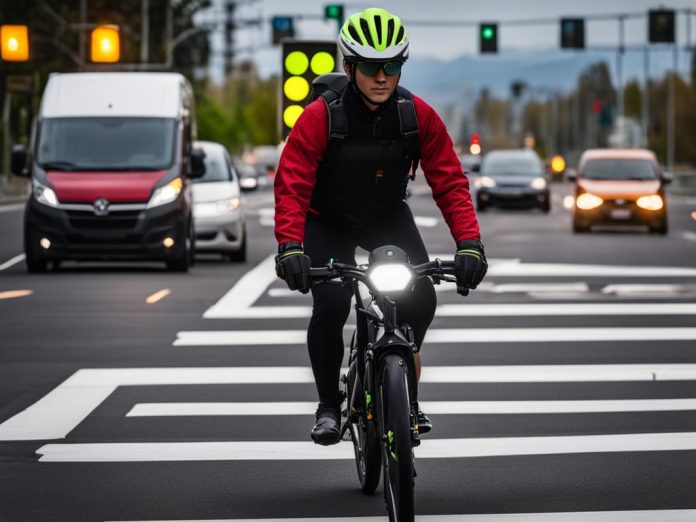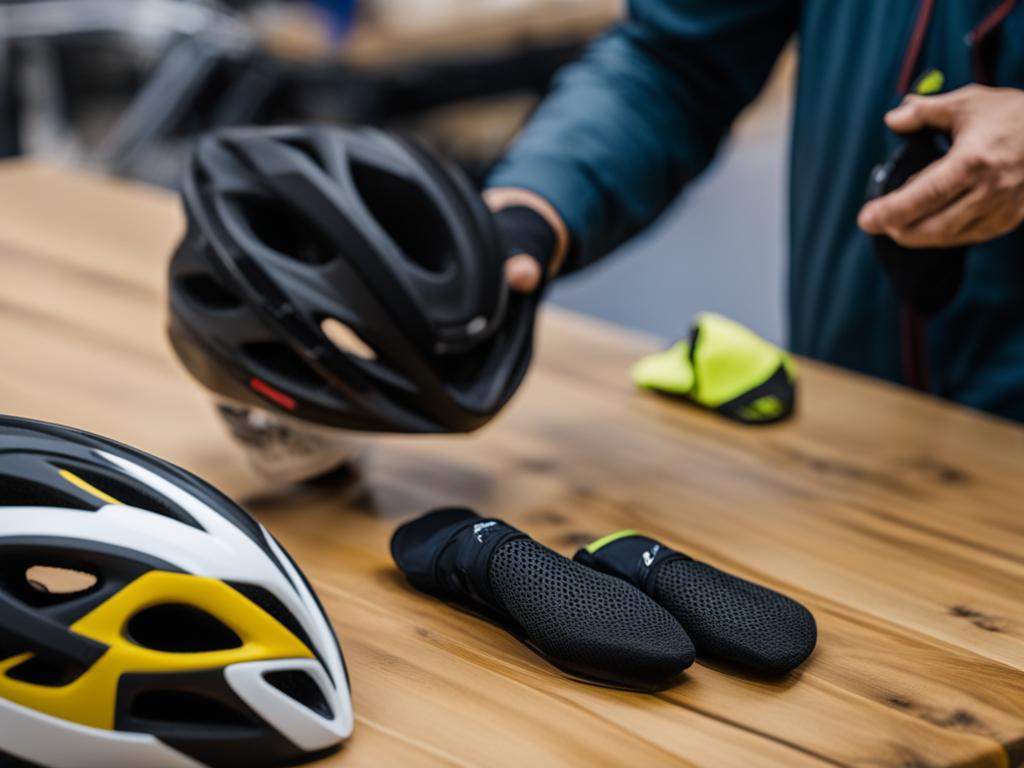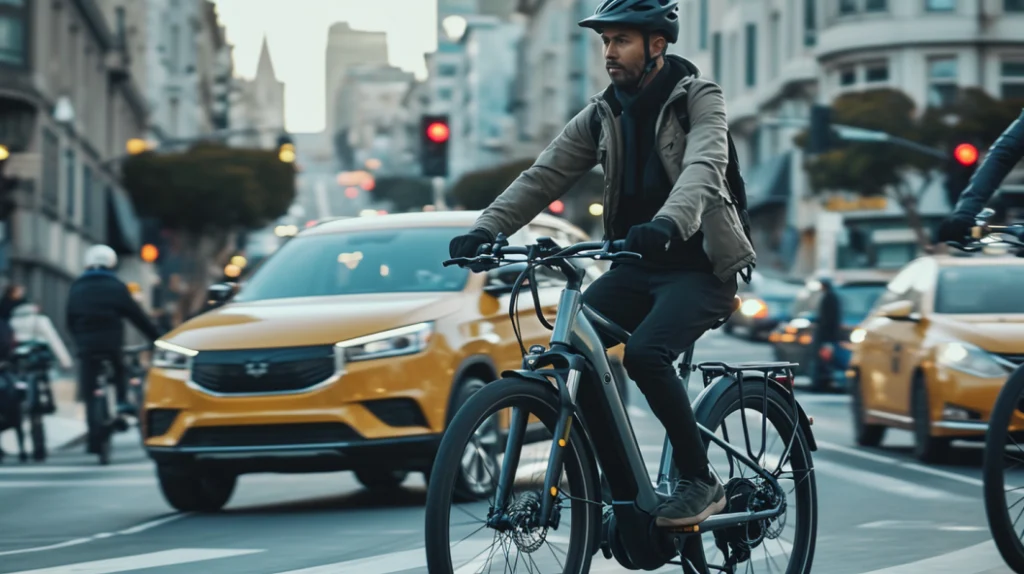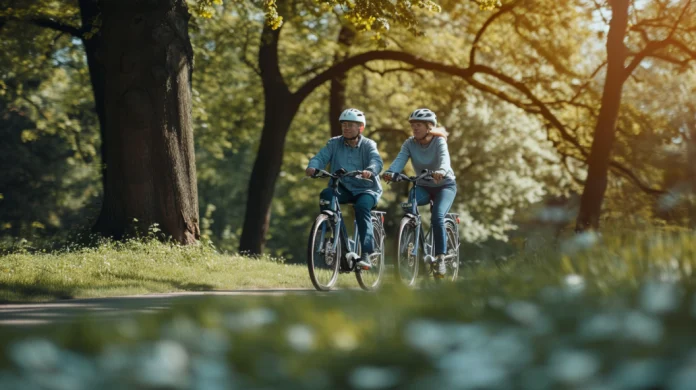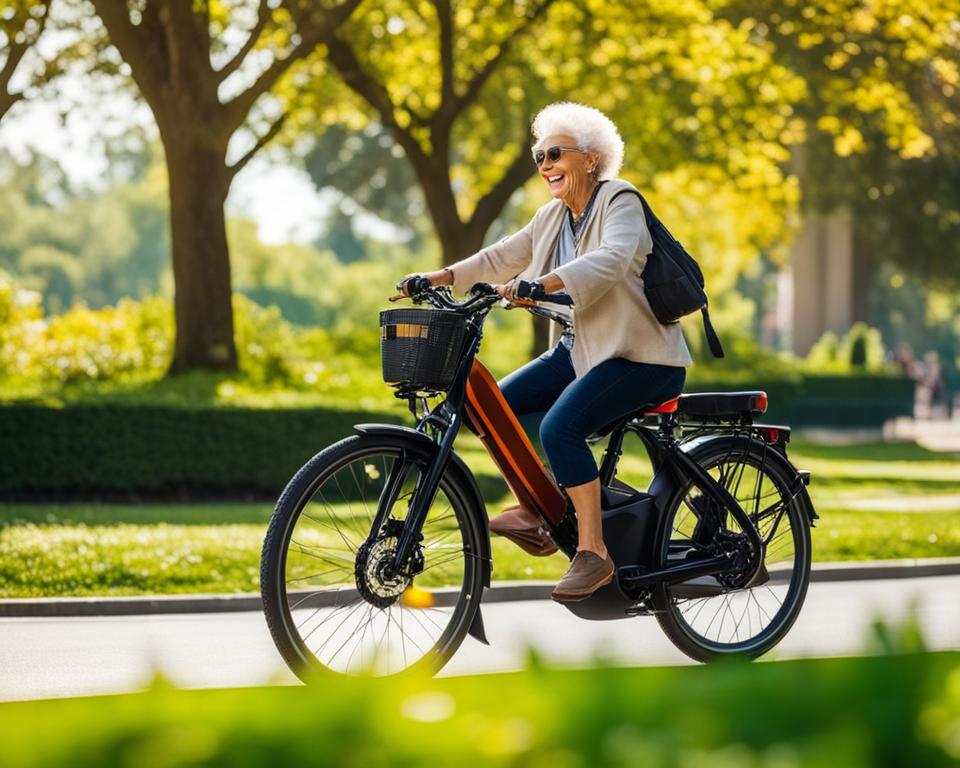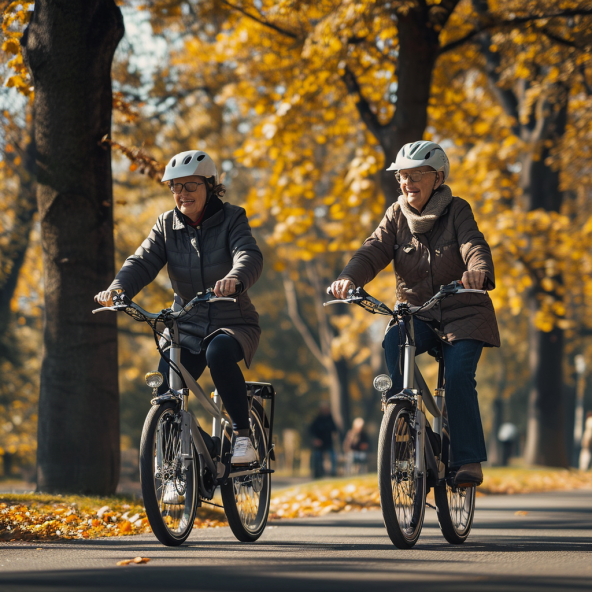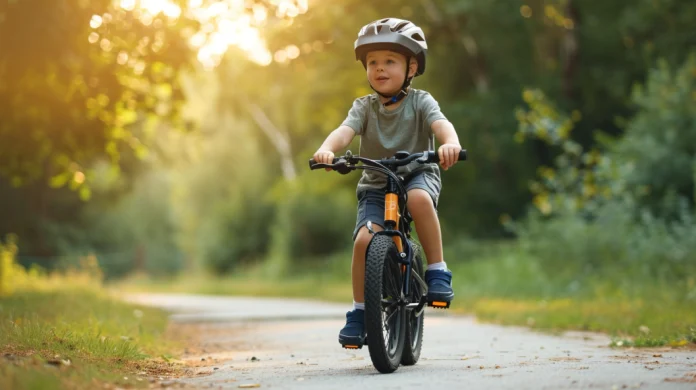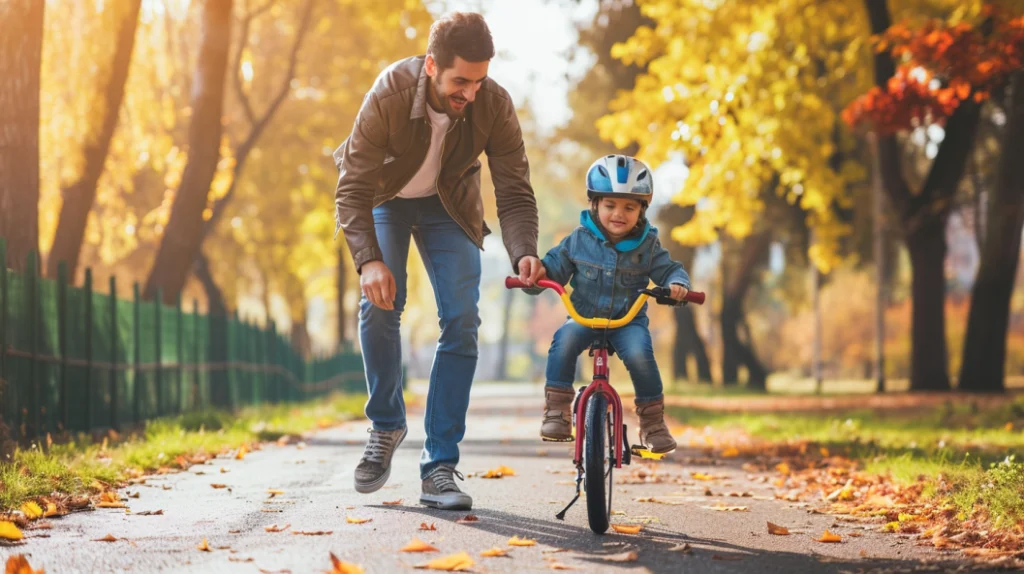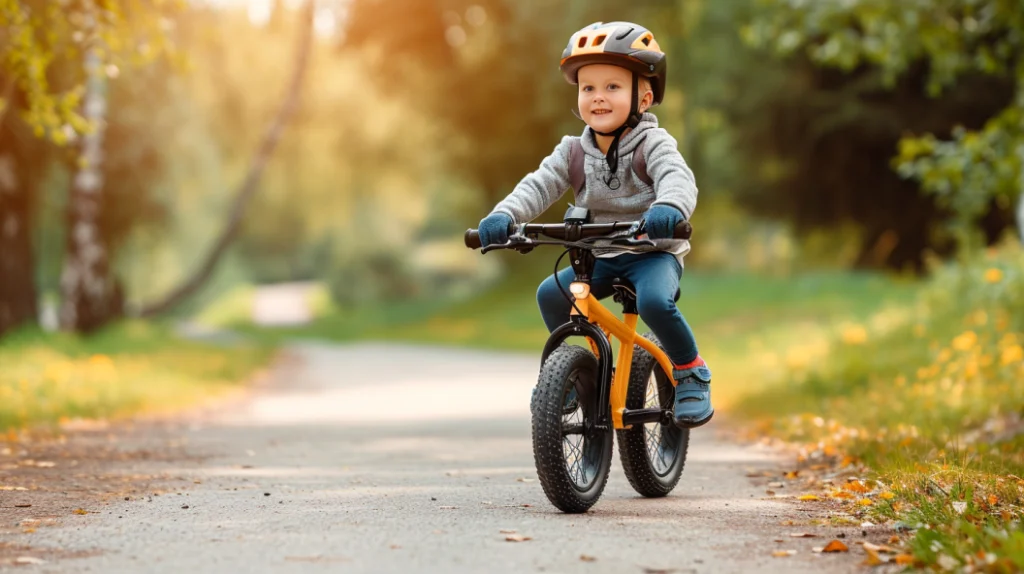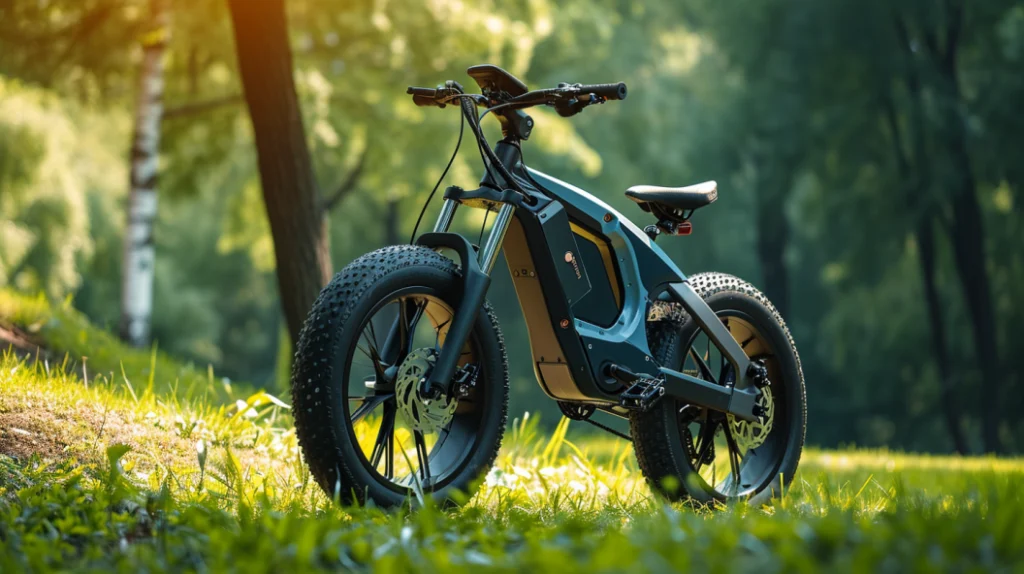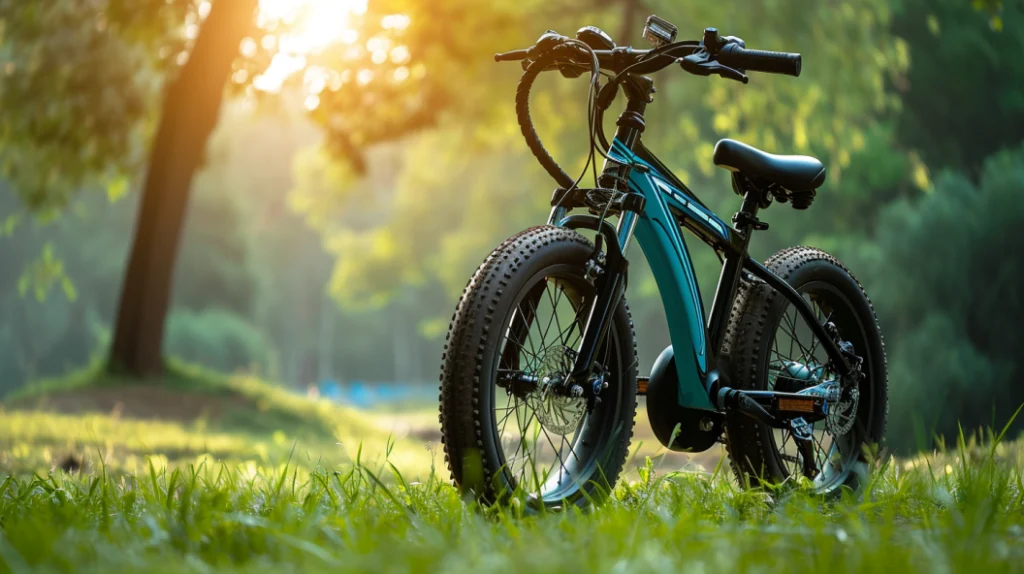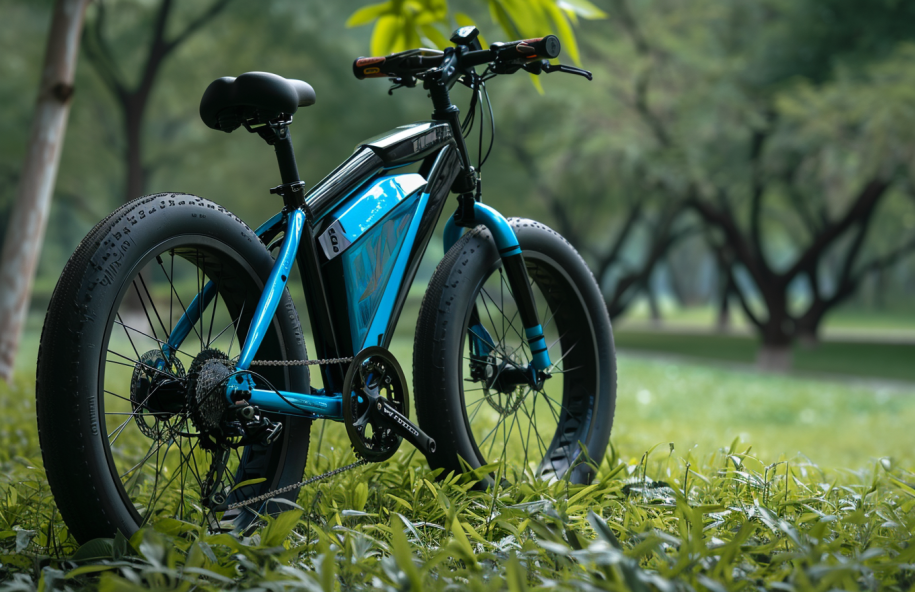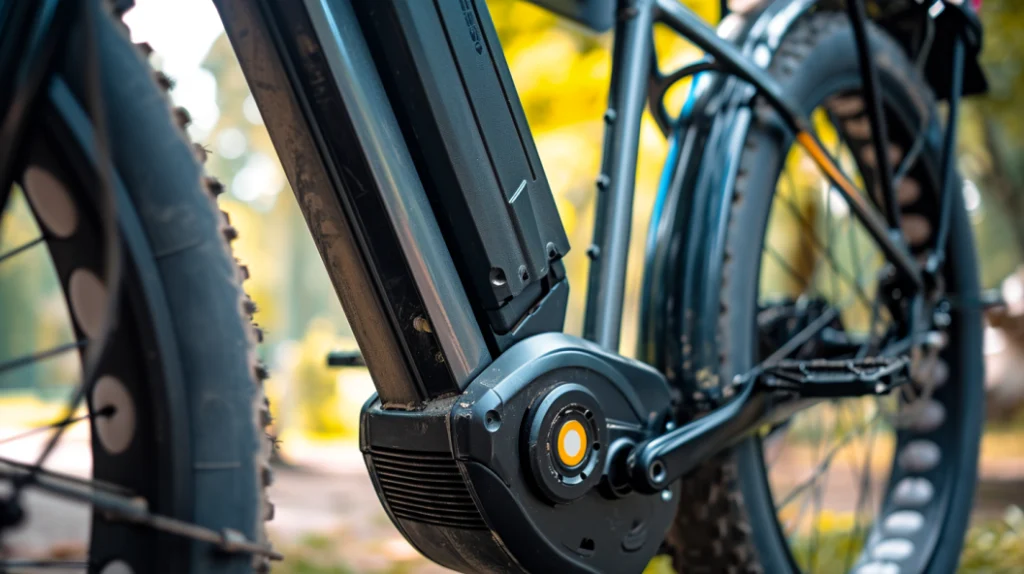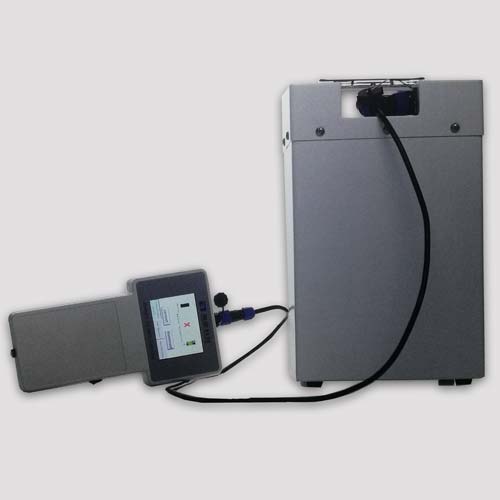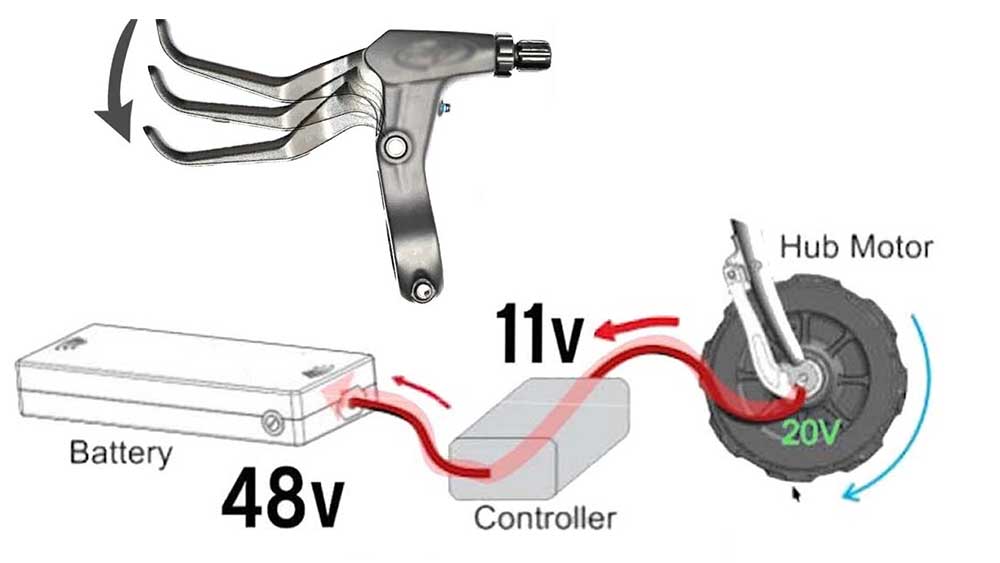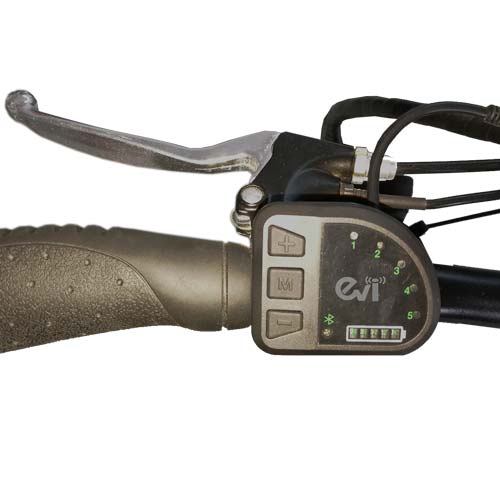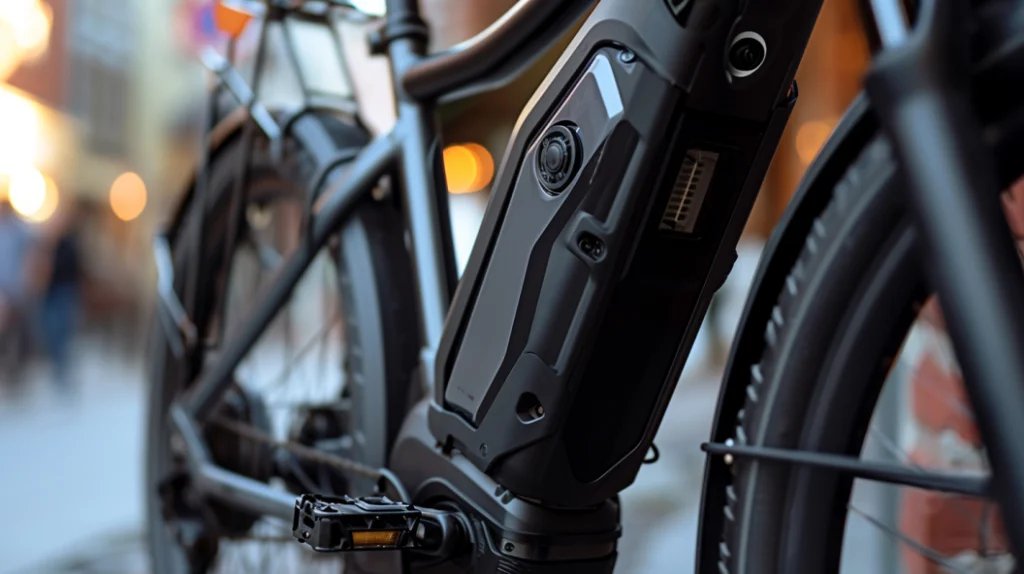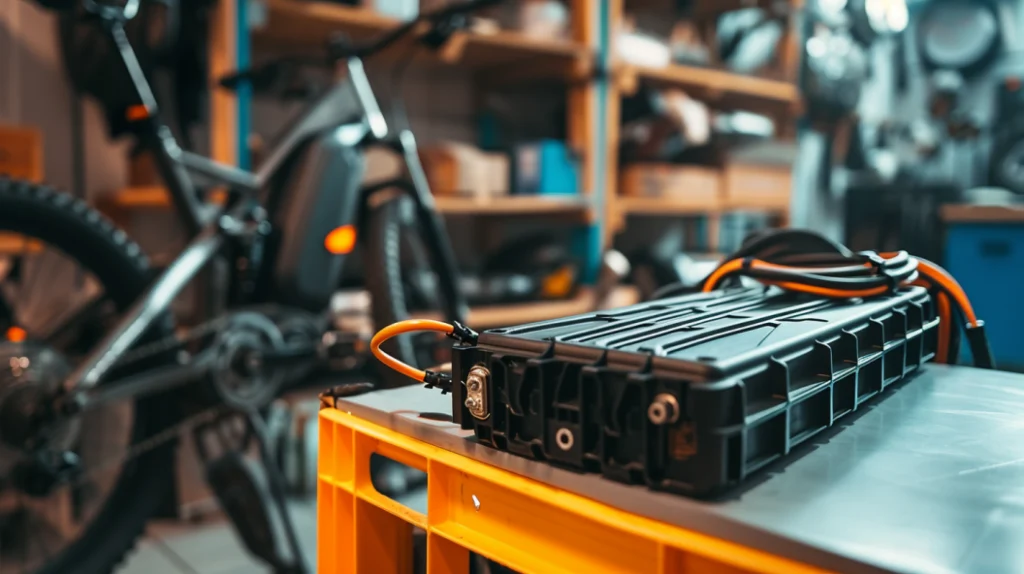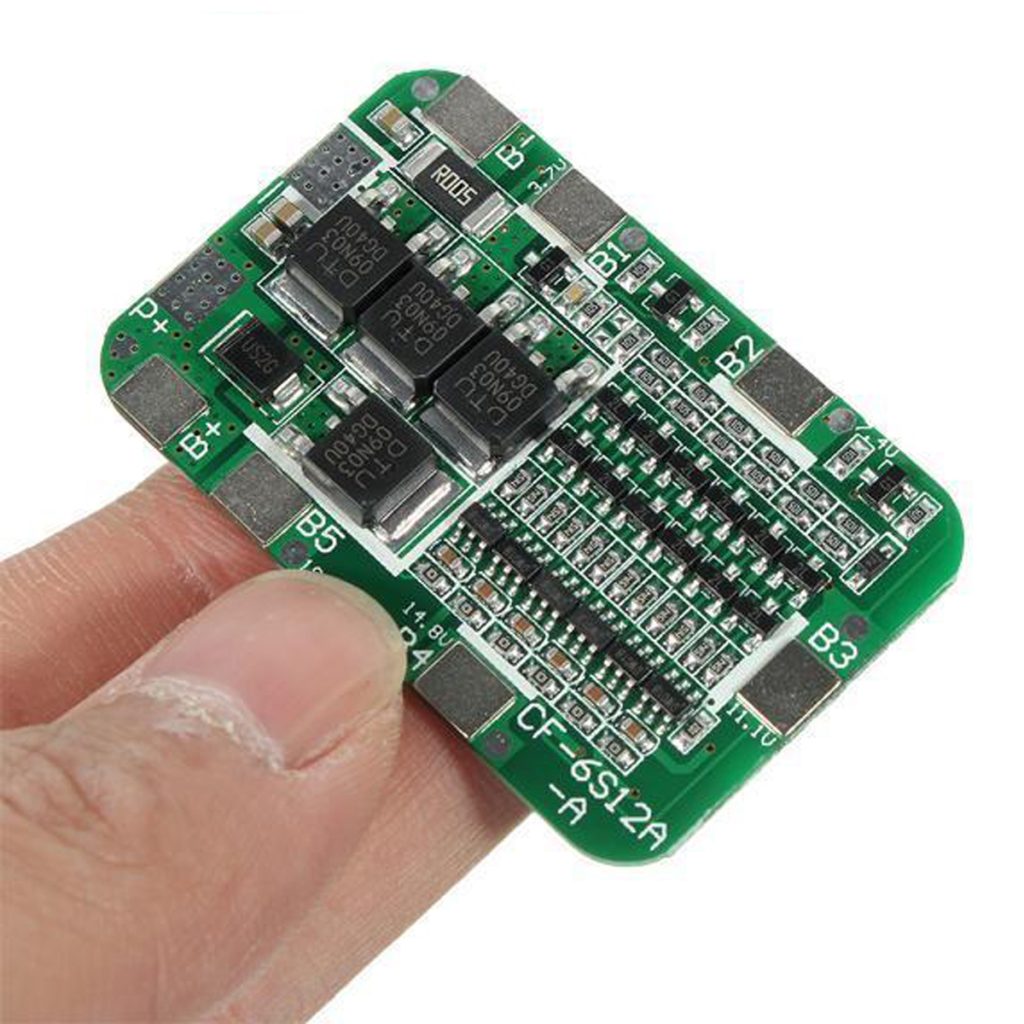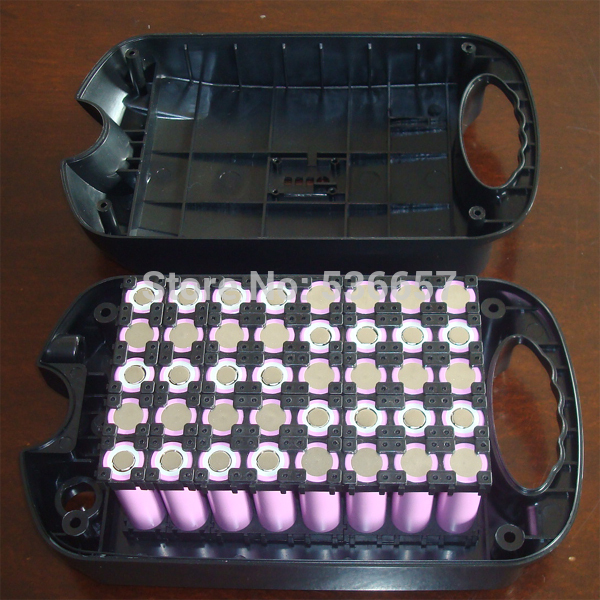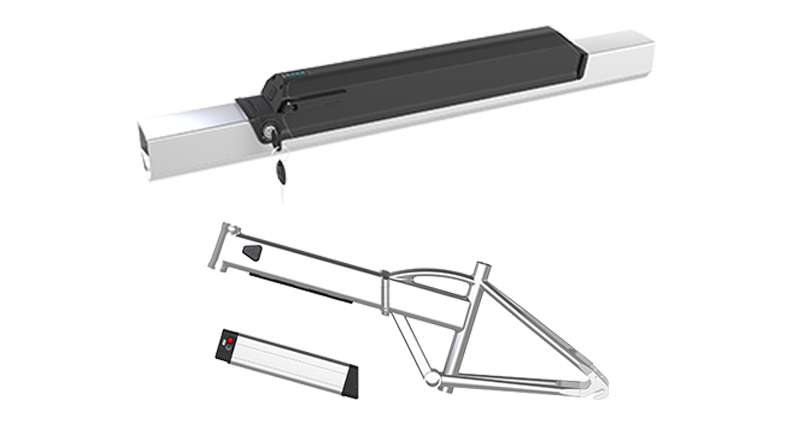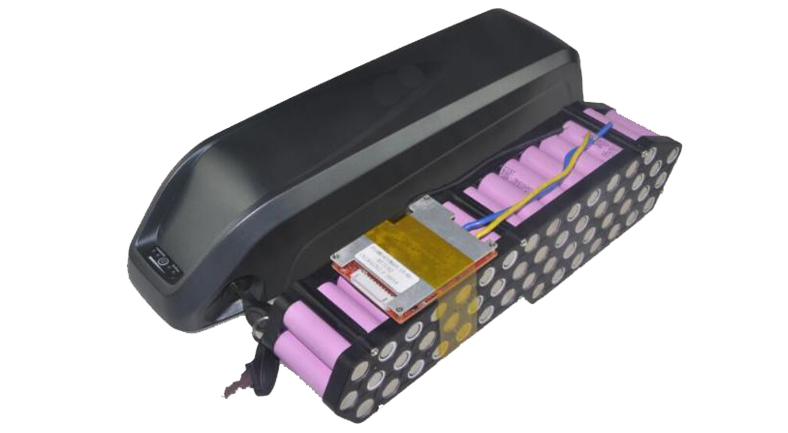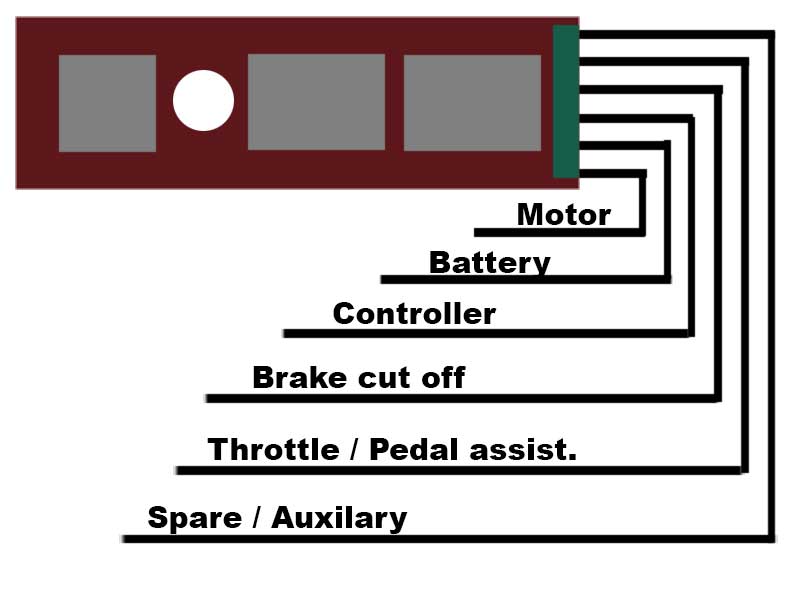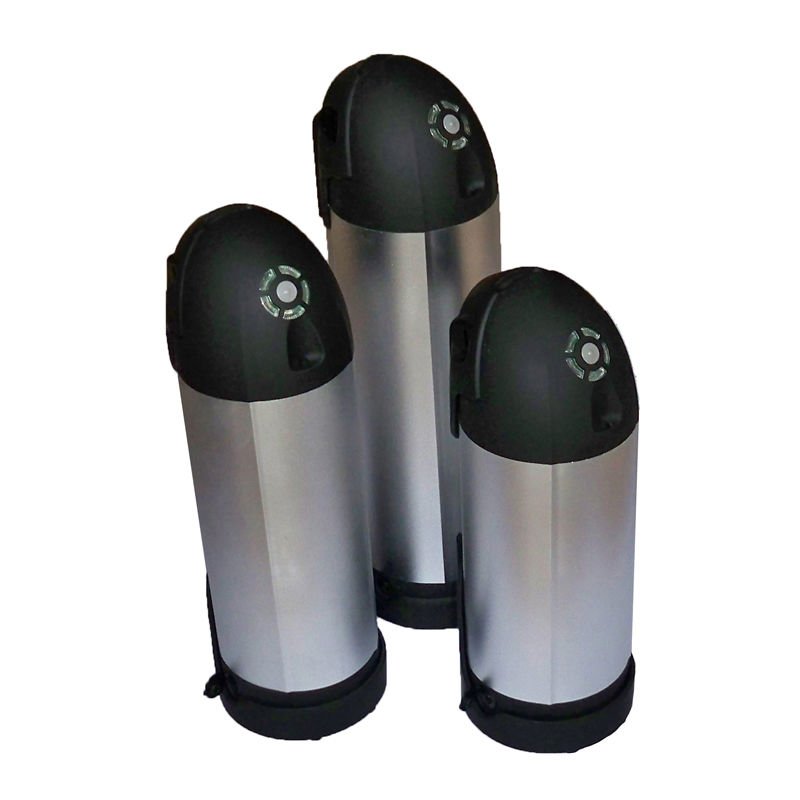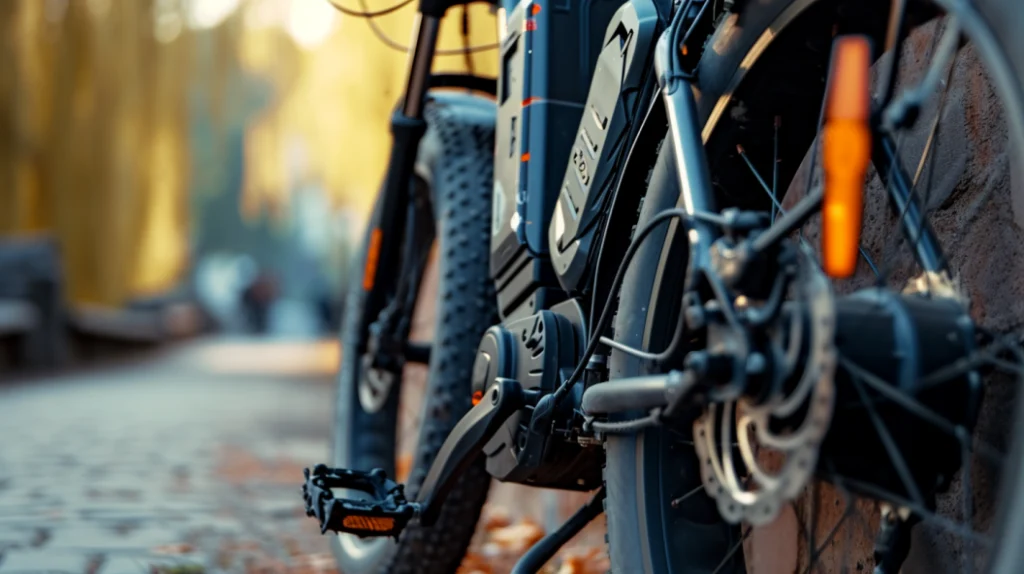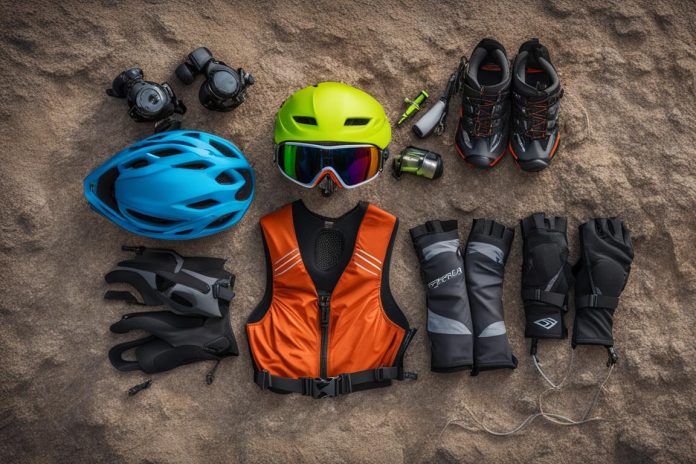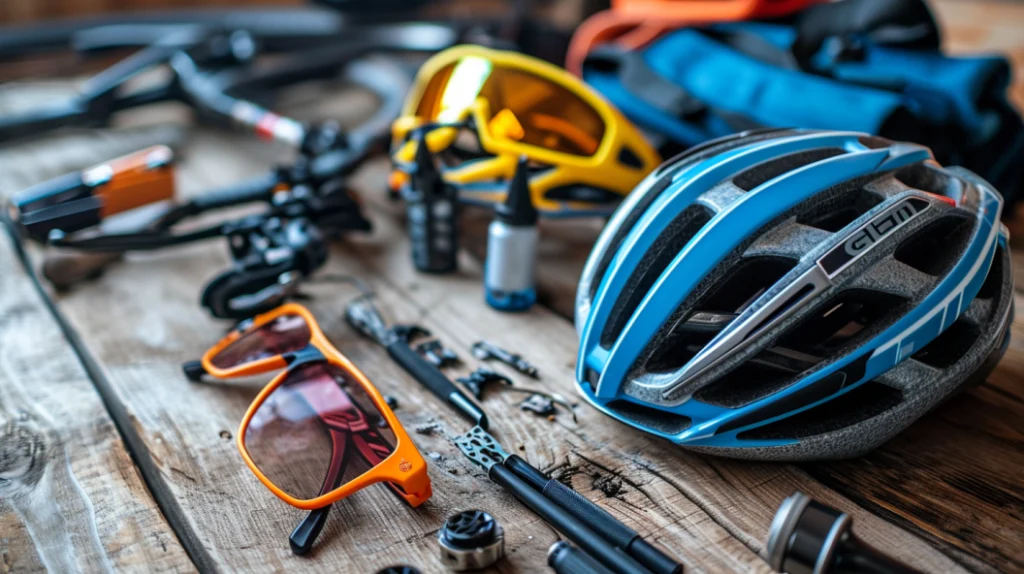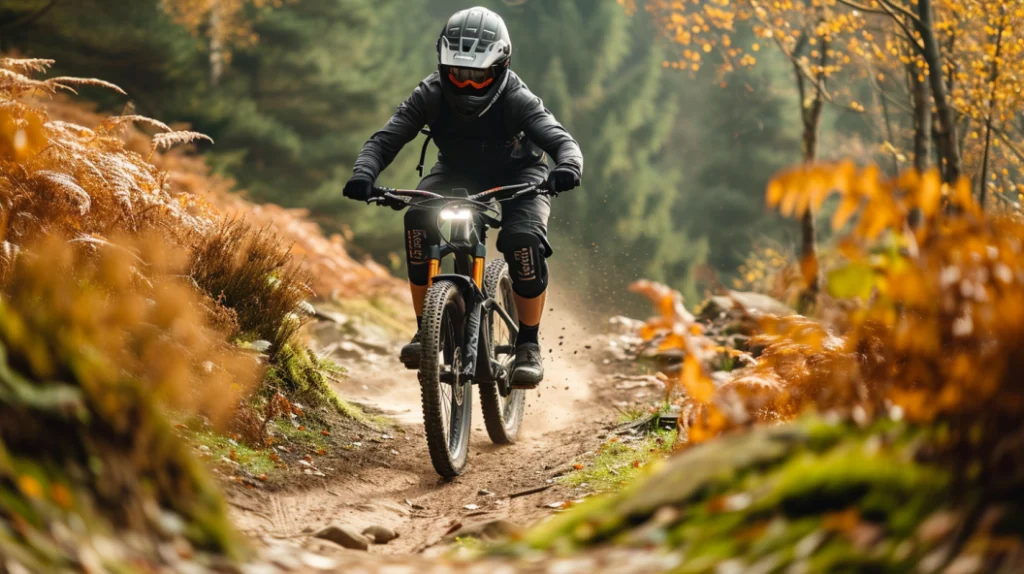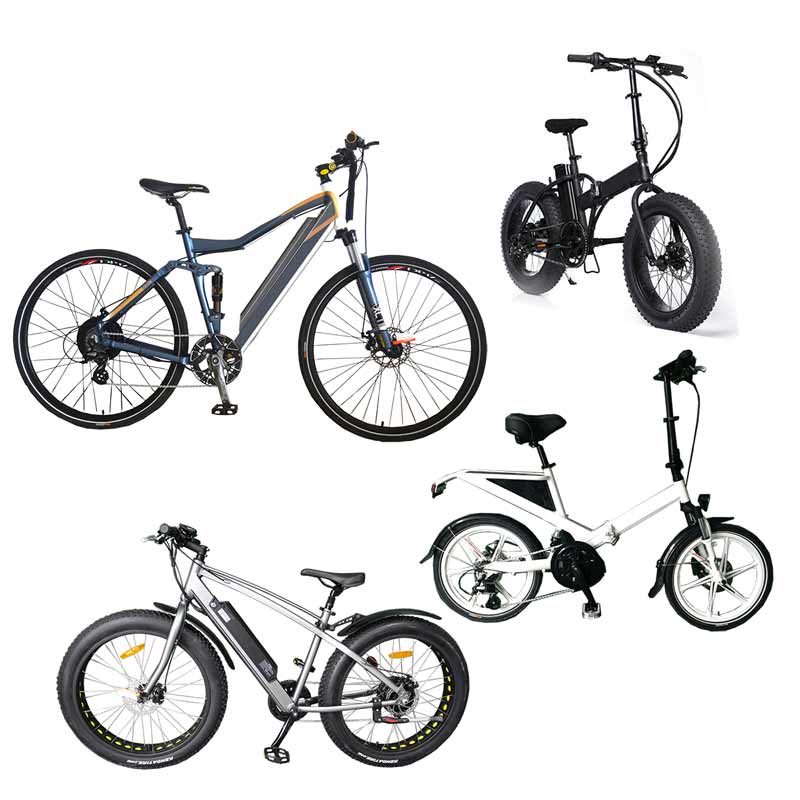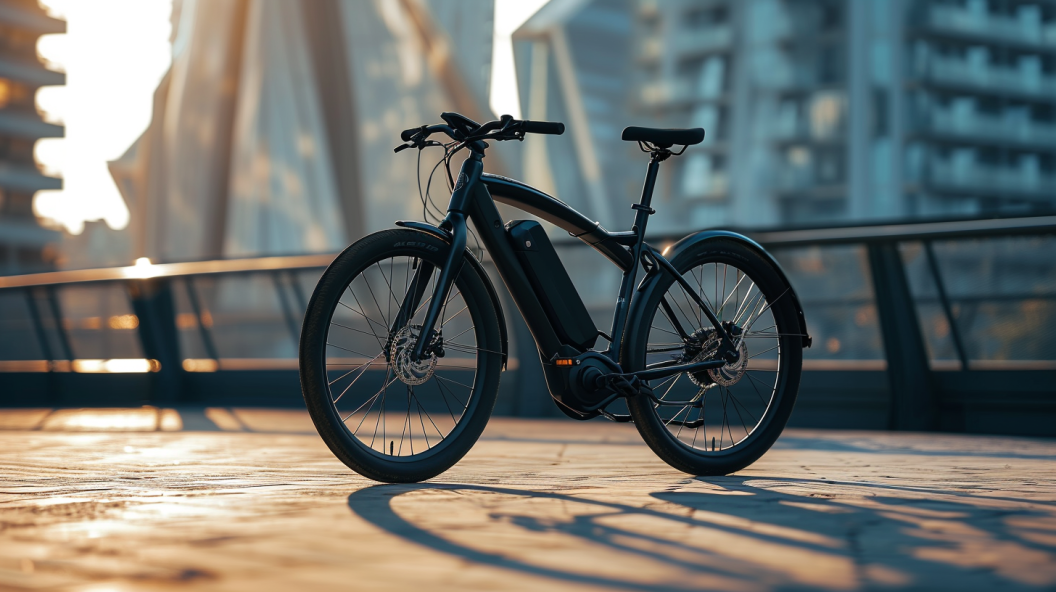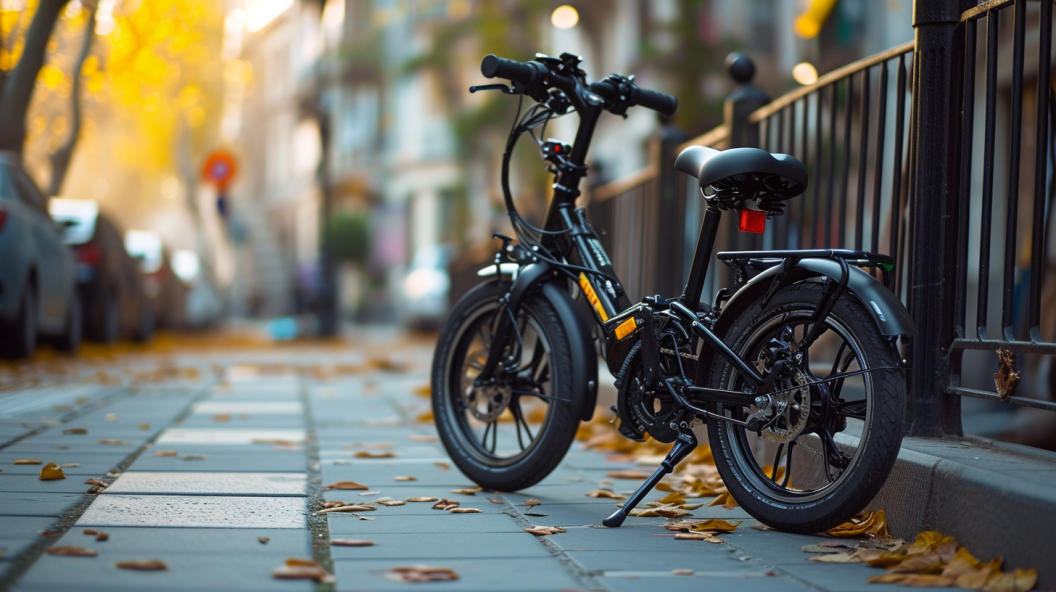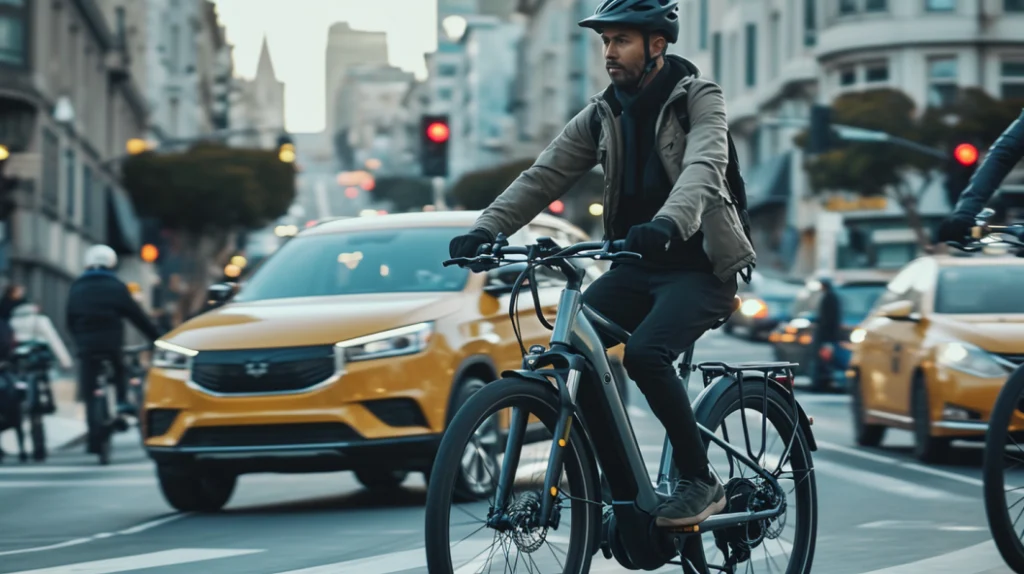Imagine you’re all set for a fun ride on your electric bike, ready to feel the wind and the thrill of the road. But when you press the power button, nothing happens. Your heart drops as you realize your eBike Won’t Power On. Don’t worry! As someone who’s been there, I’m here to help you figure out what’s wrong.
Electric bikes are getting more popular, and with that, we need to understand their complex electrical systems. Whether you’re a pro or new to eBikes, dealing with power issues can be tough. But don’t worry, we’re here to guide you through fixing your eBike’s power problems.
At ebikesus.com, we know how important it is to keep your electric bike running smoothly. That’s why we’ve put together this detailed guide to help you solve power issues. We’ll cover everything from checking the battery to looking at the wiring, so you can get your eBike back on the road.
Remember, finding the problem step by step is key when fixing electrical issues. We’ll start with the basics and move on to more complex problems. By the end of this guide, you’ll know how to handle most power problems with your electric bike.
Table of Contents
Key Takeaways
- Check all electrical connections before diving deeper into troubleshooting
- Verify battery charge and functionality using the battery indicator
- Use a digital multimeter to test battery voltage (48-52 volts is ideal)
- Investigate the controller, wiring harness, and LCD display if the battery tests ok
- Be prepared to address multiple issues, as problems can be interconnected
- A systematic approach is crucial for effective eBike power issue diagnosis
Understanding Common eBike Power Issues
Core Components and Common Failure Points:
Three main components of an ebike are the battery, controller, and motor. Of these, the controller is the most likely component to fail first, while the battery and motor are less prone to initial failure. However, other parts like the display, throttle, and wiring/cabling can also be sources of problems.
- “Every ebike or any electric vehicle for that matter has three three main components it has a battery it has a motor and it has a controller if there’s a problem with within these three main components is usually the controller the battery and motor are least likely to go out”
- “There’s mainly three parts to a bike that can go wrong You got your battery your controller or your motor You have offshoots from there you have your throttle your display and your wiring or your cabling So essentially there’s like six things that could go wrong”
Initial Checks (Before Diving into Components):
We recommend starting with basic visual and connection checks:
- Check if the display is turning on: This is the first indicator of whether the system is receiving power.
- Inspect all wiring connections: Look for any cuts, damage, or loose connections.
- Check for water damage: Ensure there is no water intrusion in the wiring.
- Verify connections are tight: Unplug and replug connections to ensure they are secure.
- Examine pins in connectors: Look for bent, broken, missing, or corroded pins. Corrosion from sparking over time can be an issue.
- Check the battery connection to the cradle: Even if the battery turns on, the connection to the bike’s system might be faulty.
- “First of all check if your display is turning on if it’s not turning on you want to check all your connection before you even start diagnosing these three main components check if the wires are good there’s no Cuts no water that Bleak into the wires you want to check all your connections”
- “First of all what i like to do is i’m just gonna do a troubleshoot let’s just check power’s not working on your bike i like to do is go to your battery see if your battery’s working are you are you able to turn it on and off…check all your wire connections check every single connection and see if it’s tight Unplug it take a look at all the pins see if any of the pins are broken bent missing it happens”
Addressing Brake Cut-offs:
The importance of checking brake cut-off sensors as a common cause of the motor not engaging:
- Magnetic brake sensors: Ensure the magnet is properly aligned.
- Engaged brakes: Sometimes the brake is slightly engaged, preventing motor activation.
- Troubleshooting step: Disconnecting the brake cut-offs can help rule out this issue.
- “If you have a electrical cut off Sometimes there’s a magnetic brake sensor so you want to check the position of your Magnet or sometimes like the brake is engaged and you won’t even know and that’s you know you press a throttle all you want or pedal assist all you want the motor is not going to turn on”
- “If you have a 500c display like this check and see if you’re getting that little yellow light on right there That means your brake sensors are cutting off…i would try disconnecting your brake your brake cut-offs if you have if your bike has brake cut offs disconnect them Now try it see if your bike works Right there that probably that probably will take care of 70 of your problems”
Battery Testing:
If the display is working, the next step is to check the battery:
- Check battery voltage: Use a voltmeter to confirm the battery is within the proper voltage range for its type (36V, 48V, 52V). The sources provide approximate voltage ranges for fully charged and minimum operational levels.
- Low voltage indicates a dead battery: Even if there is some voltage, a significantly low reading means the battery is effectively dead.
- “I take the battery I check the Vol meter if it’s giving me the proper range in the the voltage…if it has some voltage but it’s like really really low like 16 volts or 20 volts your battery is basically dead” – Golden Motor
- “I would take a volt meter to this battery make sure it’s putting out the proper voltage 48 volt battery should be putting out between 41. That’s the very lowest i would say if you should be putting out If it’s fully charged it should be putting out at least 53 volts minimum 54 volts and a little bit over if it’s fully charged 52 volt battery should be putting out about 58 volts 58.8 if it’s fully charged and it’s brand new cells 36 volt battery should be putting out about 42 volts” – Johnny Nerdout
Testing Other Components (Display, Throttle):
If the display is working and the battery voltage is good, consider testing the display and throttle:
- Display: If the display isn’t turning on, a cheap replacement can help rule out if the display itself is the issue.
- Throttle: If the pedal assist works but the throttle doesn’t, the issue might be the throttle itself. Golden Motor describes a scenario where the motor attempts to engage briefly with the throttle, indicating the throttle is sending a signal but the system isn’t fully engaging, pointing towards the controller or motor.
- “If your display is not working you want to get like a cheap replacement just to rule out is it the display that’s not is acting up or not”
- “It might just be your throttle so you just got to change out your throttle and you good to go”
Diagnosing the Motor vs. Controller:
Once the battery, display, and connections are ruled out, the problem is likely the controller or the motor. While the controller is more likely to fail, it’s crucial to test the motor:
- Brushless Motor Testing: Most ebike motors are brushless (BLDC). Golden Motor describes a method to test the motor directly by connecting two of the three thick “phase wires” to a battery. If the motor attempts to turn, it suggests the motor might be working, and the issue is likely the controller. If it doesn’t turn or behaves erratically, the motor might be faulty.
- Signs of a burnt motor: Johnny Nerdout mentions that a burnt motor might have a distinct smell (like maple syrup) and look dark inside.
- “Now it’s either the controller or the motor so my first instinct on this bike was is the controller right but there is another way of change just kind of rule out the motor” – Golden Motor
- “All I got to do is connect two of the phases to a battery and your motor will start turning…In this case it was the motor because when I connected the battery to the phase wires the with the phase wires the motor seemed like it was trying to kick in and then it would stop”
- “Finally you could take apart your motor if it smells like maple syrup and it just looks dark you’ve probably got a burnt motor core”
Replacement Strategies:
Replacing individual components is often a better and more cost-effective solution than replacing the entire ebike:
- Controllers: Universal controllers are available and often compatible with various motors, making this a cheaper fix.
- Motors: Replacement hub motors can be installed to restore the bike’s functionality.
- Batteries: While more expensive, batteries can also be replaced, including DIY options.
- “Controller is the cheapest fix and most of these Universal controllers work with any motor”
- “Instead of getting a whole bike you can just get a replacement Hub motor and you know make this into a functional bike now”
- “Same thing if you mess up your battery or your controller just change the parts you don’t got to get a whole ebike”
- “The worst case scenario is you just replace the part”
Other Potential Issues:
- Speedometer magnet: checking if the speedometer magnet is making proper contact with the speed pickup.
- Battery cable connection to the controller: A loose or disconnected cable here can cause issues.
Overall Importance of Connections:
A significant percentage of ebike power problems are due to bad connections or severed cables.
- “I’d say that is probably 80 percent of all power problems and operation errors it’s just a bad connection or a cable that got severed or something that’s just not making a connection anymore” – Ebikesus.com
Troubleshooting an ebike that isn’t working involves a step-by-step process. Begin with basic checks of connections and the display. Then, test the battery voltage. If these are good, investigate the brake cut-offs, display, and throttle. Finally, diagnose whether the issue lies with the controller (most common) or the motor. Replacing individual components is a viable and often cheaper alternative to buying a new bike. The importance of checking all connections cannot be overstated, as they are a frequent source of problems.
E-bikes have changed the way we travel, offering a green alternative to cars. They’re usually reliable, but sometimes, power problems can happen. Let’s look at common electrical faults and how to fix them.
Other Suggestions for you to check if the above did not work
Identifying Electrical Components
Your e-bike’s power system has several important parts. The battery is the heart, providing power. The controller makes sure power gets where it needs to go. The motor moves you, and the display shows important info. Knowing these parts helps find problems faster.
Importance of Systematic Troubleshooting
When you face wiring or controller issues, a step-by-step method is key. Begin with the battery, then check the controller and motor. This way, you can quickly find the problem. Troubleshooting e-bikes is often easy and cheaper than fixing cars.
Safety Precautions When Diagnosing Power Problems
Always put safety first with electrical issues. Make sure to disconnect the battery before checking wires or connections. Use tools with insulation and avoid working in wet areas. If you’re not sure, it’s best to get help from a pro.
| Issue | Possible Cause | Solution |
|---|---|---|
| No Power | Dead battery | Charge or replace battery |
| Intermittent Power | Loose connections | Check and tighten connections |
| Motor Not Responding | Controller malfunction | Test controller, replace if necessary |
Most e-bike problems are simple to fix. With the right tools and knowledge, you can keep your ride running smoothly for years.
Checking the Battery: Your First Line of Defense
If your eBike won’t start, the battery is usually the problem. Fixing battery issues can save you time and money. Let’s look at how to diagnose and fix battery problems.
Verifying Battery Charge and Connections
First, check the battery’s charge level. If the control panel LEDs don’t turn on, charge the battery. Use a voltmeter to check the voltage. It should be between 48-52 volts for most eBike batteries.
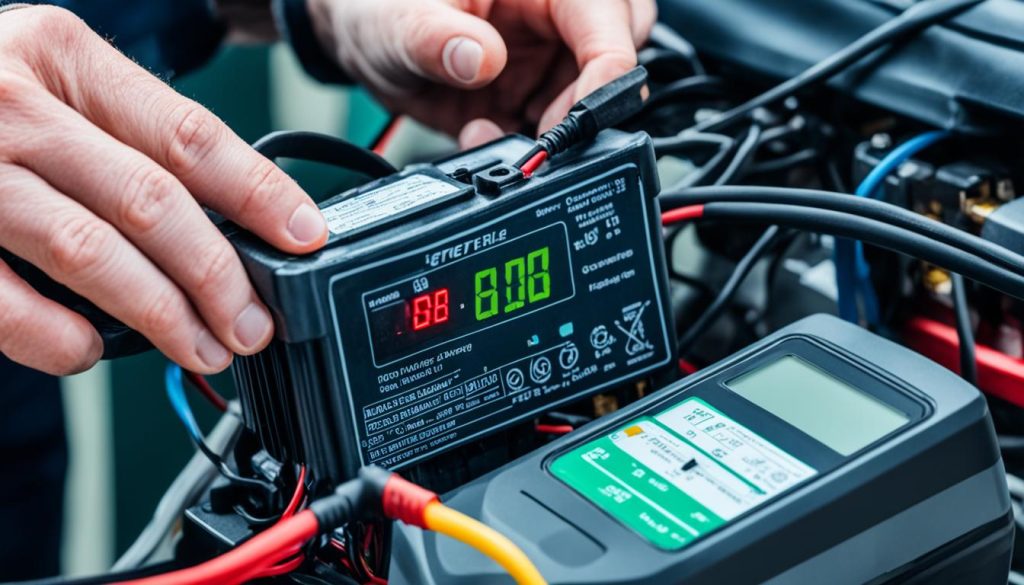
Using the Battery Indicator Lights
Battery indicator lights tell you about your battery’s condition. Here’s what different lights mean:
- Solid green: Fully charged
- Flashing green: Charging in progress
- Solid red: Low battery
- Flashing red: Battery issue needing attention
Proper Charging Techniques
Right charging habits help your battery last longer. Don’t overcharge (more than 12 hours) or undercharge. Keep batteries at 40-80% charge when not in use. Charge them in a cool place.
| Charging Tip | Benefit |
|---|---|
| Charge after each ride | Keeps battery healthy |
| Use original charger | Ensures safety and compatibility |
| Avoid extreme temperatures | Protects battery |
If you’re still having battery problems, consider getting a new one or getting expert help. Remember, with proper care, eBike batteries last 3-5 years.
Inspecting the Charger and Charging Port
When you’re having trouble charging your eBike, check the charger and charging port first. A broken charging system can cause many errors, making your ride less enjoyable. Here are some steps to fix these issues.
Begin by connecting your charger to a wall outlet. Look for lights that show it’s working right. If there are problems, test the charger’s output with a voltmeter. The voltage should be a bit higher than what’s listed on the charger.
Then, inspect the charging port on your eBike. Check for any damage or dirt that could block the connection. If the battery charges in another eBike but not yours, you might need to replace or fix the port.
- Always use the correct charger for your specific eBike model
- Keep the charging port clean and free from debris
- Avoid overcharging your battery (more than 12 hours)
- Maintain battery charge between 40% and 80% for optimal lifespan
Most eBike batteries should last 3 to 5 years with good care. If you keep getting charging errors after these steps, you might need expert help. Electric bikes USA has professionals who can fix complex charging system problems.
Examining the Wiring Harness for Continuity
If your e-bike won’t turn on, checking the wiring is key. The wiring harness links all electrical parts, often the cause of power problems. We’ll look into how to spot wiring issues with diagnostic tools.
Using a Multimeter for Wiring Checks
A digital multimeter is great for fixing e-bike wiring problems. Set it to check continuity mode to see if the wiring is okay. This tool finds breaks or shorts in the wires.
Step-by-Step Guide to Testing Continuity
- Unplug connections at both ends of the wiring harness
- Test each wire for continuity
- Listen for a beep, indicating a sound connection
- Check all pin openings in the wiring harness
Identifying and Addressing Wiring Faults
Wiring problems can lead to power issues. Watch for these signs during your check:
- Loose connections
- Frayed or exposed wires
- Signs of melting or heat damage
- Corrosion at connection points
Focus on areas near the rear hub motor, where wires get stressed. If you spot any issues, fix them quickly to get your e-bike working again. If unsure, always consult a pro e-bike mechanic.
| E-Bike Type | Motor Wires | Throttle Unit |
|---|---|---|
| Modern (Brushless) | Up to 7 wires | Dual 5K potentiometers |
| Older (Brushed) | 2 wires | 0-5K ohm range |
LCD Display Troubleshooting Techniques
If your ebike won’t turn on, the LCD display might be the problem. Display issues can be hard to figure out, but knowing how to troubleshoot can help. Let’s look at some tips for fixing your LCD screen.
First, check if all connections are secure. Make sure cables between the display and controller are tight. This often fixes many display problems. Then, look for any wiring damage. Damaged wires can stop data from getting through, making the screen not work right.
If your ebike got wet, let it dry out completely. Water can really harm electronic parts. For ongoing issues, try resetting the controller. This might fix any display problems.
Here’s a quick checklist for fixing LCD display issues:
- Tighten all connections
- Inspect wiring for damage
- Allow the bike to dry if exposed to water
- Reset the controller
- Test with a known working display if possible
If these steps don’t fix the problem, you might need a new display or controller. Always check with the manufacturer or an authorized dealer for the right parts. Getting professional help is key when you’re not sure about repairs.
| Common Display Issues | Possible Causes | Troubleshooting Steps |
|---|---|---|
| No power to display | Loose connections, faulty wiring | Check and tighten connections, inspect wiring |
| Flickering screen | Water damage, controller malfunction | Dry out bike, reset controller |
| Incorrect readings | Software glitch, sensor issues | Reset system, check sensor connections |
Controller Issues: The Brain of Your eBike
Your eBike’s controller is like its brain, controlling power and functionality. It’s key to know how to fix controller problems to keep your ride running well.
Signs of Controller Malfunction
Controller issues can show up in different ways. You might see the motor stop working, get weird power, or the whole system could fail. These signs mean you should check the controller right away.
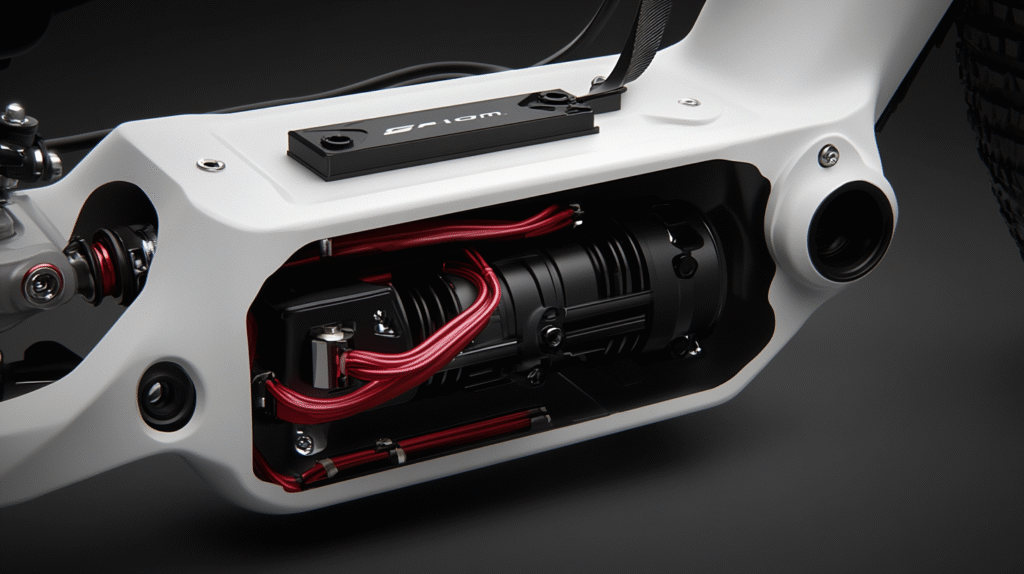
Testing Controller Functionality
To check the controller, look for loose wires and check if fuses are blown. If your eBike has a circuit breaker, try resetting it. For tough problems, you might need special tools or should get help from a pro.
When to Consider Controller Replacement
If you can’t fix the controller with basic steps, you might need a new one. Look out for these signs it’s time for a new controller:
- Consistent power fluctuations
- Failure to respond to throttle or pedal-assist inputs
- Visible damage to the controller unit
Fixing controller issues quickly helps avoid bigger problems with your eBike’s electrical system.
eBike Will Not Power On! Troubleshooting
When your eBike won’t turn on, it’s time to investigate. Begin with a power-on reset by taking out and putting back the battery. If that doesn’t fix it, use your troubleshooting guide and follow these steps to fix your eBike.
First, look at the battery. It should show 48-52 Volts to work right. Make sure it’s fully charged and plugged in correctly. Leaving a battery at 0% for too long can cause problems.
Then, check all electrical connections. Loose wires, especially near the rear hub motor, can stop the electric help. Use a multimeter to check if the wires are connected well. No beeping sound? That’s likely the issue.
- Verify the power switch and ignition key positions
- Examine the LCD Display – try connecting a known functional screen
- Check fuses if your model has them
If these steps don’t fix the issue, several parts might be the problem. Look at your owner’s manual for advice on your model. Regular upkeep helps avoid start-up problems later.
“The heart of your eBike’s electrical system is its battery. Always start your troubleshooting there.”
Remember, fixing an eBike involves many topics, from brakes to gear maintenance. If you’re not sure, getting professional help is best. Enjoy your ride!
Investigating Motor-Related Power Problems
If your e-bike won’t turn on, it might be the motor. Knowing the signs and how to fix them can save you time and money.
Symptoms of Motor Issues
Motor problems show up as no power, odd sounds, or uneven help. If you hear grinding noises or your bike’s performance drops, it’s time to check the motor.
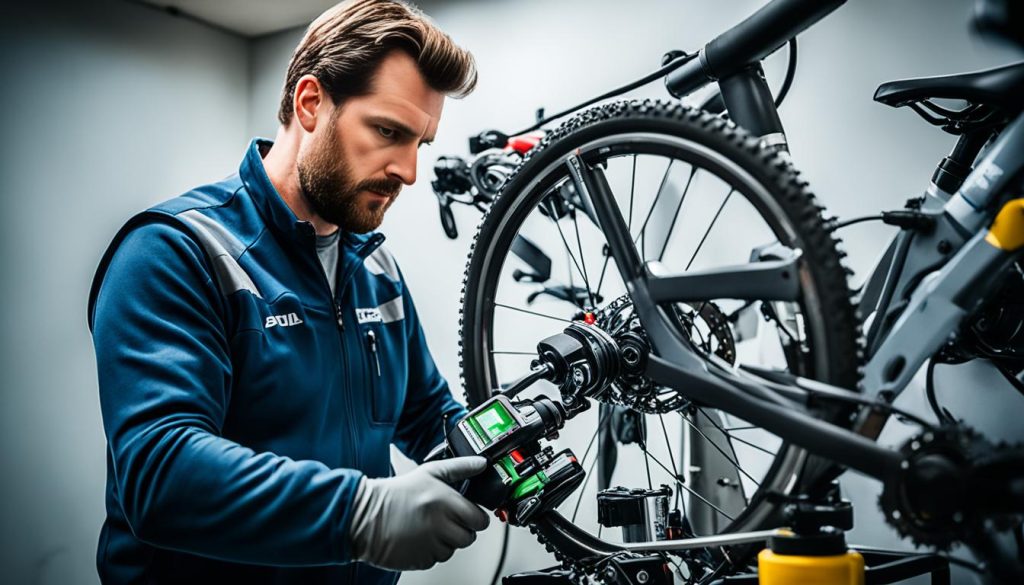
Checking Motor Connections
First, check the motor connections. Look for loose or damaged wires, especially at the rear hub. Debris or blockages can stop the motor from working right. If you see melted wire ends, it might mean overheating, which can hurt the motor and controller.
When to Seek Professional Help
Some motor issues can be fixed by yourself, but others need a pro. If you see overheating signs or big damage, get a pro to fix it. E-bike motors are complex, and fixing them yourself can cause more problems.
- Unusual noises keep happening after simple checks
- The motor doesn’t react to the controls
- Visible damage on the motor housing
- Sudden loss of power while riding
Regular maintenance can stop many motor problems. Keep your e-bike clean, dry, and safe from extreme weather. This helps it last longer and avoids expensive repairs.
Addressing Software and Firmware Glitches
eBikes now have advanced software that controls their functions. Sometimes, this software can get glitchy, causing power issues. If your eBike won’t start, a firmware problem might be the reason.
First, check if your eBike needs software updates. Some eBikes let you update the software yourself. Others need a dealer to do it. Keeping your eBike’s software updated helps avoid problems and boosts performance.
If your eBike updated recently and still has issues, try a system reset. This can fix minor software glitches. Look in your manual for how to reset your specific model.
- Check for pending software updates
- Perform a system reset if needed
- Consult your manual for specific instructions
If you’re still having trouble with connectivity, reach out to your eBike maker or a local dealer. They can help with advanced troubleshooting for software issues. Always follow the official guidelines when updating software to avoid more problems.
“Regular software updates are crucial for maintaining optimal eBike performance and preventing power-on issues.”
At ebikesus.com, we know how important it is to keep your electric bike running well. Keep up with the latest software updates for your eBike model. This ensures a smooth and fun ride every time.
Battery Management System: A Critical Component
Your electric bike’s battery management system (BMS) is key to a smooth ride. It keeps an eye on your battery, making sure it works well and lasts long.
Understanding BMS Functions
The BMS watches over your e-bike’s power. It checks cell voltages, temperatures, and charge levels. This stops problems like overcharging or deep discharging that could harm your battery.
In batteries with many cells, the BMS balances voltage. This keeps performance high and battery life longer. It also protects against overcurrent, overheating, and short circuits to prevent damage or safety risks.
Diagnosing BMS Failures
If your BMS fails, you might see your battery draining fast, overheating, or charging issues. Battery life that’s not consistent and sudden shutdowns are warning signs. If you notice these, it’s time to look into your BMS.
Figuring out BMS failures often needs special tools. Some issues can be fixed with a reset or calibration, but others might mean you need a new battery. Always get help from a pro for electrical system repairs for safety.
Potential Solutions for BMS Issues
Here’s what to do if you think you have BMS problems:
- Try a BMS reset to balance charge across cells
- Use a voltmeter to check battery health and function
- Make sure you’re charging your battery right to avoid overloading
- Look for any loose connections or damaged wires
E-bike repairs are usually less expensive than car fixes. Most common issues can be fixed quickly, often for free. If problems keep happening, get help from a skilled technician to fix power supply issues well.
Professional Repair Services: When to Seek Expert Help
Some eBike problems need help from pros. Electric bike experts are key when you’ve tried fixing it yourself and hit a roadblock. They’re also essential for complex electrical issues.
About 5% of eBike troubles require a pro’s touch. This shows how often DIY fixes and regular upkeep work well. But, knowing when to get help is crucial.
Certified techs are pros at fixing ebikes. They use real parts for top-notch repairs. They can tackle tough problems like motor stalls, drive system issues, and battery problems.
“Regular professional check-ups every 500 miles or annually can prevent major issues and extend your eBike’s lifespan.”
When you need expert help, share all the details about the problems and what you’ve tried to fix. This info helps techs figure out the issue quicker. It might also cut down on repair time and cost.
| Service Type | Frequency | Benefits |
|---|---|---|
| Basic Check-up | Every 500 miles or annually | Prevents major issues, extends eBike lifespan |
| Battery Inspection | Every 2-4 years | Ensures optimal performance, prevents range issues |
| Software Updates | As released by manufacturer | Improves functionality, fixes bugs |
Professional eBike services do more than just fix current problems. They also prevent future ones. This keeps your electric bike running well for many years.
Conclusion
Learning how to maintain your electric bike is key to keeping it running well. This guide gives you the skills to fix common power issues. About 60% of ebikes that won’t start have battery problems. Regularly check connections and charge your battery to avoid these issues.
Simple fixes often solve power problems. For example, 5% of issues come from not checking the switch correctly. If easy fixes don’t work, look at the motor, controller, and sensors. Try lifting the rear wheel and pressing the throttle to check the motor.
If you’re unsure, look at your owner’s manual or contact customer service. About 30% of riders get help from experts when they can’t fix it themselves. For top-notch advice and electric bikes, check out ebikesus.com. Keeping up with maintenance and troubleshooting will keep you riding well and make your ebike last longer.
FAQ
What are the key electrical components in an eBike?
The main parts of an eBike’s electrical system are the battery, controller, motor, and display unit.
How do I check the battery charge on my eBike?
Use the control panel’s LED lights to see the battery charge. If the lights don’t show up, try charging the battery. Check the battery voltage with a voltmeter, aiming for 48-52 volts.
How do I verify if the charger is working properly?
Check if the charger works by plugging it into a wall outlet and looking for indicator lights. Use a voltmeter to check the charger’s output, which should be higher than the battery’s voltage. Make sure the charging port on the eBike isn’t damaged or dirty.
How can I check the wiring harness for continuity issues?
Use a digital multimeter in continuity mode to check the wiring harness. Disconnect both ends and test each wire for continuity. A beep means the connection is good. Check all connections in the wiring harness.
What should I do if the LCD display seems faulty?
Try swapping the display with a known working one if you can. If not, consider buying a new one for testing. Look for any loose or damaged connections on the display unit.
What are some signs of controller issues?
Signs of controller problems include the motor stopping, power delivery being erratic, or the whole system not working. Check for loose wires or blown fuses in the controller.
What steps should I take if my eBike won’t power on?
First, check the battery to make sure it’s charged and connected right. Look at all electrical connections for any looseness or damage. Check the power switch and ignition key if your eBike has them. Test the charger and charging port too. If these steps don’t fix it, look at the controller, wiring harness, and LCD display.
How can I troubleshoot motor-related power problems?
Check the motor connections for any looseness or damage, especially at the rear hub. Make sure there are no physical blockages or debris that could stop the motor. Watch for signs of overheating or damage to the motor, and get professional help if you see any.
Can software or firmware issues cause power-on problems?
Yes, software and firmware problems can cause power issues. Check if your eBike needs software updates and follow the manual for reset steps specific to your model.
What is the Battery Management System (BMS) and how can I troubleshoot it?
The BMS keeps track of and manages the battery’s health and performance. Signs of BMS problems include uneven battery life, sudden shutdowns, or charging issues. Fixing BMS issues usually needs special tools and help from a professional.
When should I seek professional help for eBike power issues?
Get professional help if you can’t fix the problem yourself or if it’s too complex. Look for certified eBike technicians or authorized service centers for your brand.



